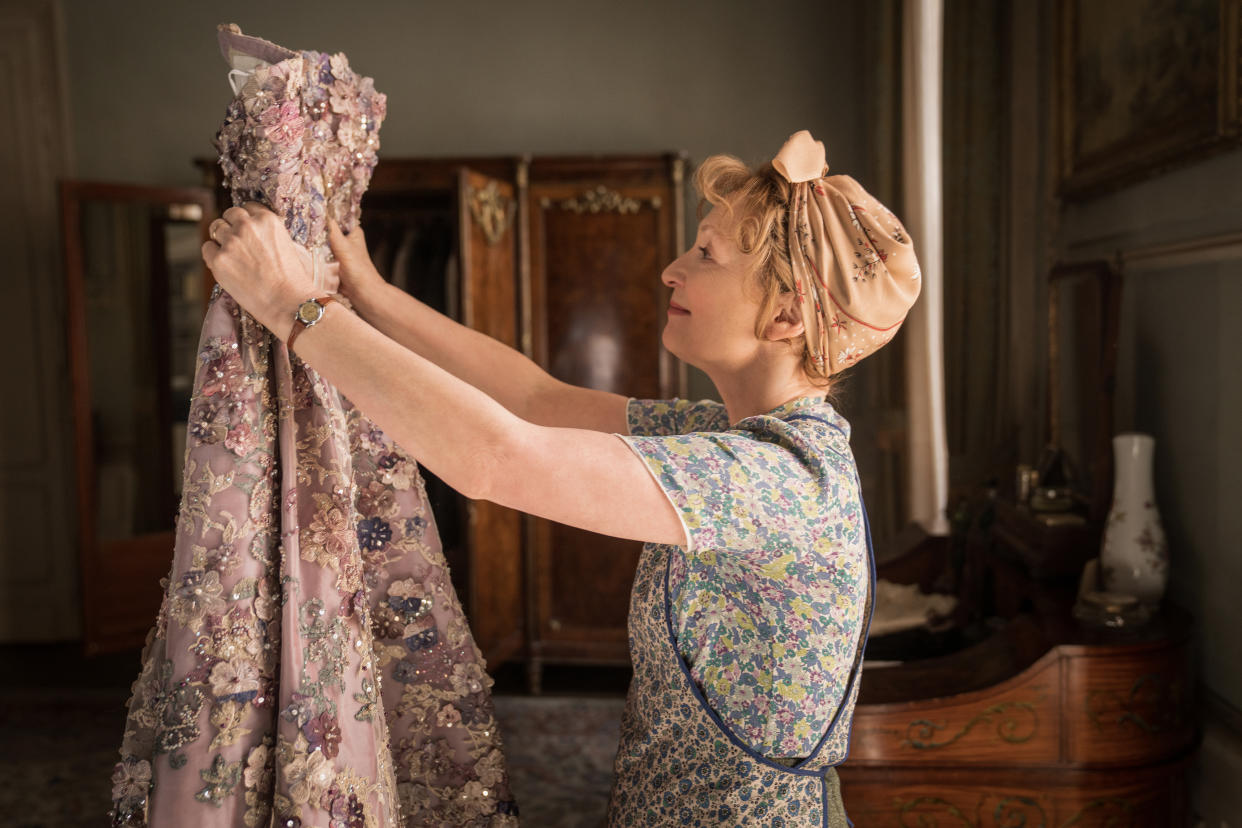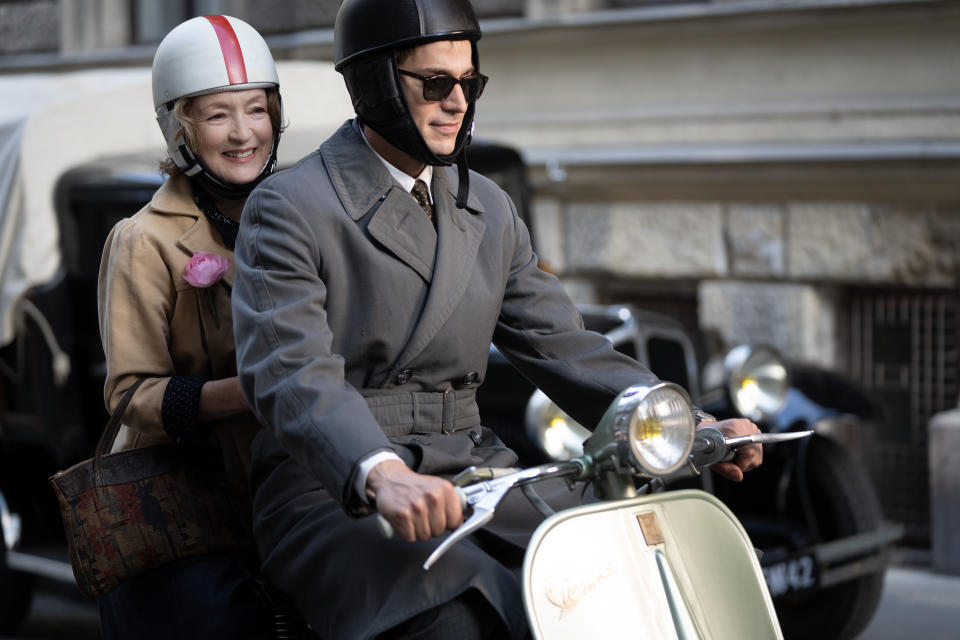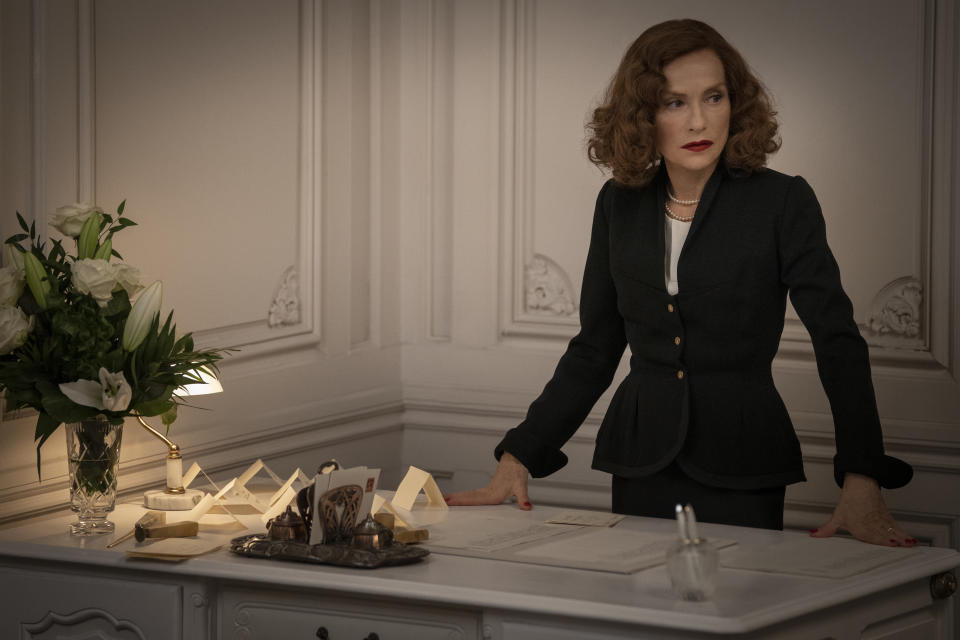‘Mrs. Harris Goes to Paris’ Review: Lesley Manville Delights in a Later-in-Life Fantasy Confection

- Oops!Something went wrong.Please try again later.
- Oops!Something went wrong.Please try again later.
A housekeeper waltzing into Christian Dior and choosing a couture gown may sound like the height of fantasy, but the biggest stretch in Anthony Fabian’s “Mrs. Harris Goes to Paris” may be all the nice French people she meets along the way. Starring the inimitable Lesley Manville, in a role that effectively transitions the frequent Mike Leigh collaborator into the Helen Mirren phase of her career, “Mrs. Harris Goes to Paris” is a charming confection of a middle-aged, middle-class fantasy.
Imbuing the lavish period delights of “Mrs. Maisel” with a lively post-menopausal heroine “Hacks” made trendy, “Mrs. Harris”
More from IndieWire
How Three-Time Oscar Winner Jenny Beavan Weaved Mid-Century Dior Into 'Mrs. Harris Goes to Paris'
'Where the Crawdads Sing' Will Tell Us If Blockbuster Novels Have a Theatrical Future
The movie begins in 1957 London, where Mrs. Ada Harris (Manville) has finally received word, after years of holding out hope, that her dear Eddie was killed in action some dozen years prior. As she goes about her usual routine, cleaning the flats of the entitled rich who regard her as nothing more than reliably good-natured help, she’s struck by the most beautiful gown she’s ever seen. “Christian Dior, five hundred pounds,” explains the pompous client who hasn’t paid her in weeks (the divine Anna Chancellor, playing a well-worn character). In her renewed grief, Mrs. Harris latches onto the idea of a Dior gown as her dream, and decides to do whatever it takes to get one.
With this somewhat inexplicable desire motivating the rest of the movie, it often feels like it’s reaching for meaning. Even her friends, fellow housekeeper Vi (Ellen Thomas) and flirtatious bookie Archie (Jason Isaacs) don’t understand why Ada is suddenly churning out sewing work and gambling her money on dog racing. After a few unexpected windfalls, which she chalks up to signs from Eddie to pursue her dreams, Mrs. Harris is suddenly on a plane to Paris to get herself a frock. “One o’ them five hundred quid ones.”
With no plan or place to stay, she first encounters a convivial bunch of winos while sleeping at the train station. Charmed by the plucky Englishwoman, one walks her to the House of Dior, leaving her with the weighty reminder, “In France, the worker is king!” Rushing in after a model who drops her purse in a hurry, Mrs. Harris unknowingly sneaks into the presentation of Dior’s tenth anniversary collection. Unaware of the etiquette for such an elite event, she is stopped at the door by the uptight Madame Colbert (Isabelle Huppert, doing the least and killing it), who insists there is no possible way such a woman could buy a Dior gown.

Dávid Lukács
Through another series of wild happy accidents, she charms her way into the show, and eventually into ordering a gown. A handsome Marquis (Lambert Wilson) invites her as his plus-one; a handsome accountant André (Lucas Bravo) invites her to stay in his flat while her dress is being fitted; and the model Natasha (Alba Baptista), who turns out to be the face of Dior, excites all the workers in the atelier with the story of the housekeeper who saved all her wages for a Dior gown.
What follows is a whirlwind week in Paris full of dancing with the Marquis, playing matchmaker for the kind young Parisians, and even leading to the solution of Dior’s money woes. If it all sound a bit ridiculous, it very much is, but it’s enjoyable, with Manville squeezing every ounce of charisma out of the quippy one liners she’s been given. Of a can-can dancer at a Moulin Rouge-like establishment, Mrs. Harris remarks bluntly: “She’s a dead ringer for my cousin Tilda! From behind.” The same joke somehow works yet again when, upon seeing the famed Monsieur Dior, she observes: “Who’s that bloke? He looks like my milkman.”

Dávid Lukács
Written by a committee of four that includes “Girl with a Pearl Earring” scribe Olivia Hetreed, the screenplay often overreaches for meaning. (The film is the third adaptation of Paul Gallico’s 1958 novel “Mrs. ‘Arris Goes to Paris,” but the first to go to the big screen, versus television). The romance between André and Natasha ignites over a bastardization of Jean-Paul Sartre’s “Being and Nothingness” that is sure to offend most French people, and the fact that the only person of color is Ada’s housekeeper friend who lifts her when she’s down is both unfortunate and unfortunately not surprising. Though hardly subtle, the class solidarity through-line is the strongest part of the story, and it’s hard not to feel something when Mrs. Harris descends the stairs in her couture Dior into a neighborhood dance.
It seems that, for good people, even the silliest of dreams really can come true, and how fun to be able to watch them do just that.
Grade: B-
Focus Features will release “Mrs. Harris Goes to Paris” in theaters on Friday, July 15.
Best of IndieWire
The 15 Best Survival Movies, from 'Cast Away' to 'The Revenant'
New Movies: Release Calendar for July 15, Plus Where to Watch the Latest Films
Sign up for Indiewire's Newsletter. For the latest news, follow us on Facebook, Twitter, and Instagram.

